Abstract
Thoracic duct cells obtained from normal (unimmunized) donors restored the primary hemolysin response of lethally irradiated or neonatally thymectomized rats to sheep red blood cells. Synergy between thoracic duct cells and bone-marrow cells was demonstrated in the irradiated hosts. However, thoracic duct cells did not restore the primary antibody response of irradiated rats challenged with diphtheria toxoid, but did restore the response of neonatally thymectomized rats. The addition of peritoneal exudate cells or bone-marrow cells to inocula of thoracic duct cells also failed to restore the response of irradiated hosts to diphtheria toxoid, although normal spleen cells restored the response. These findings indicate that the cellular events involved in the initiation of the primary antibody response to sheep red blood cells differ from those involved in the response to diphtheria toxoid.
Full text
PDF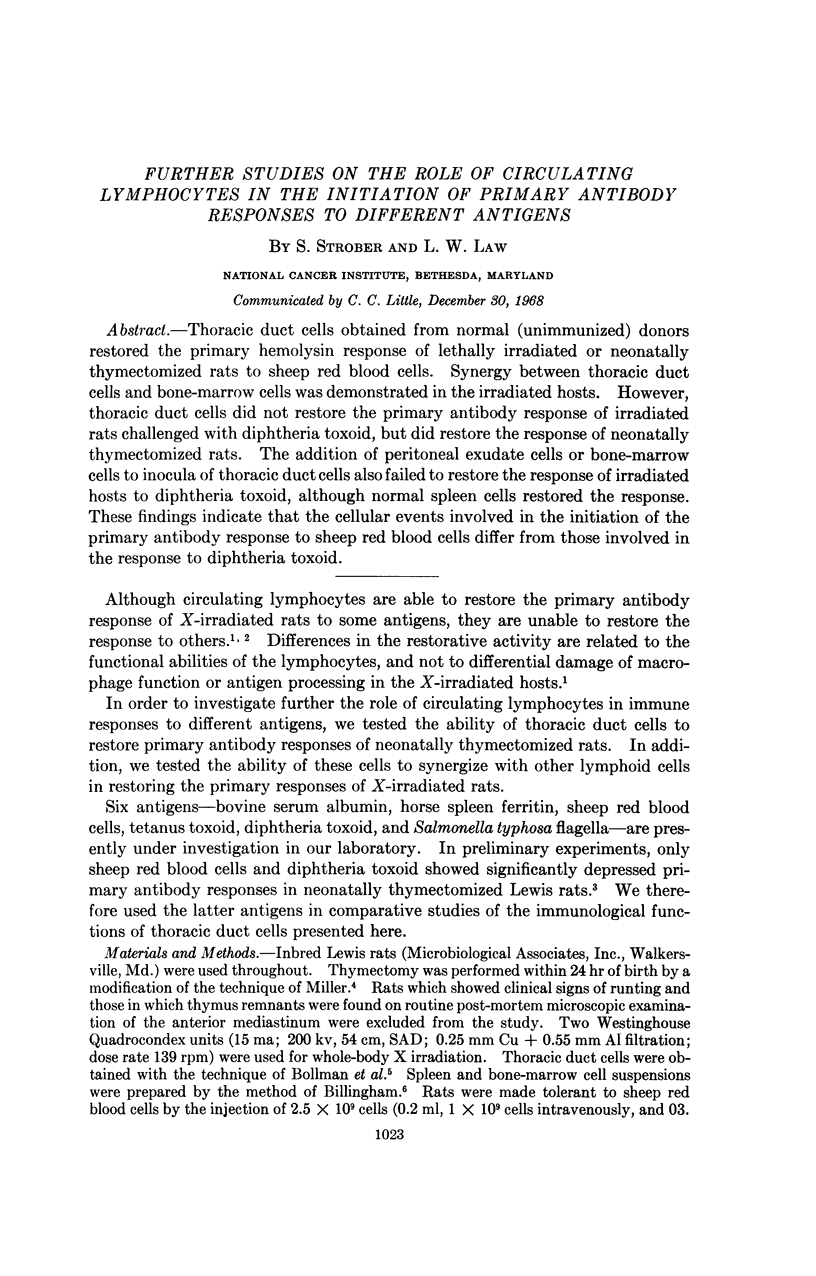
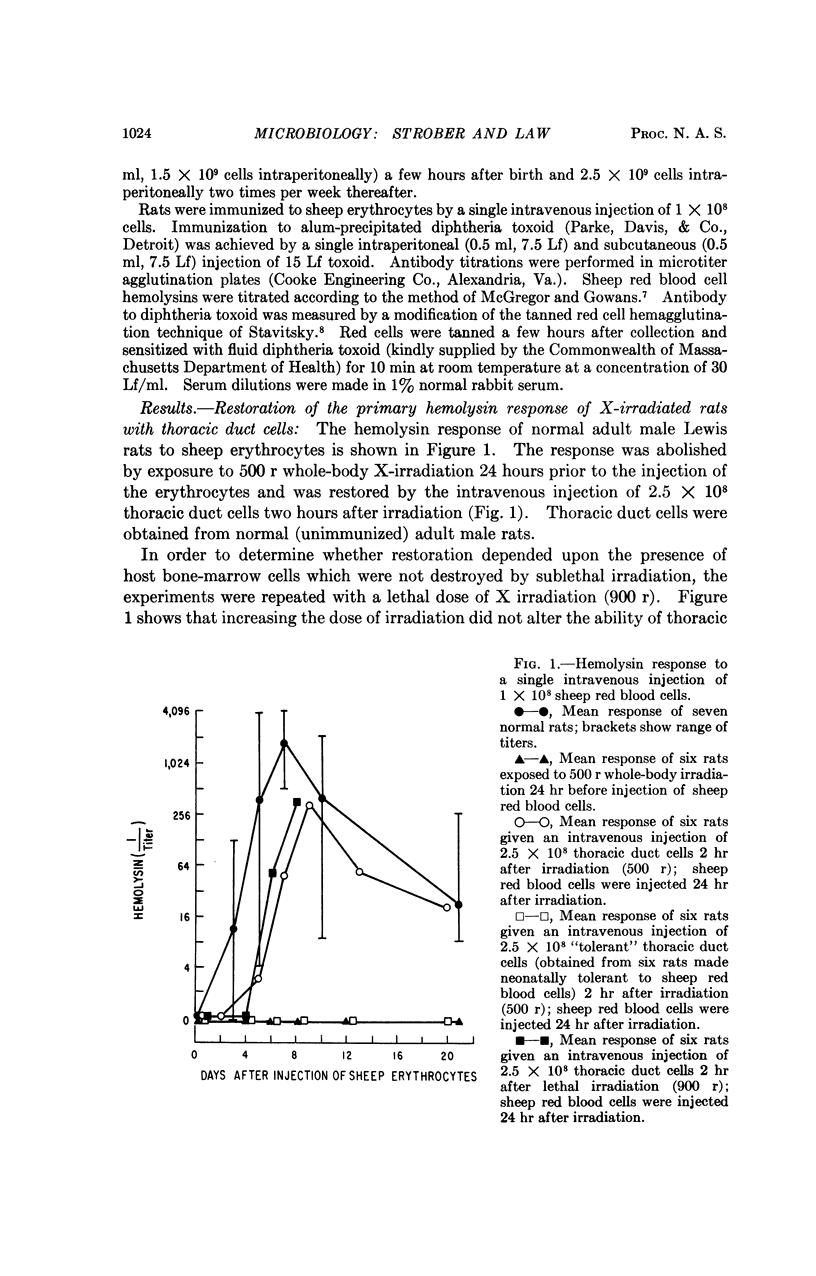
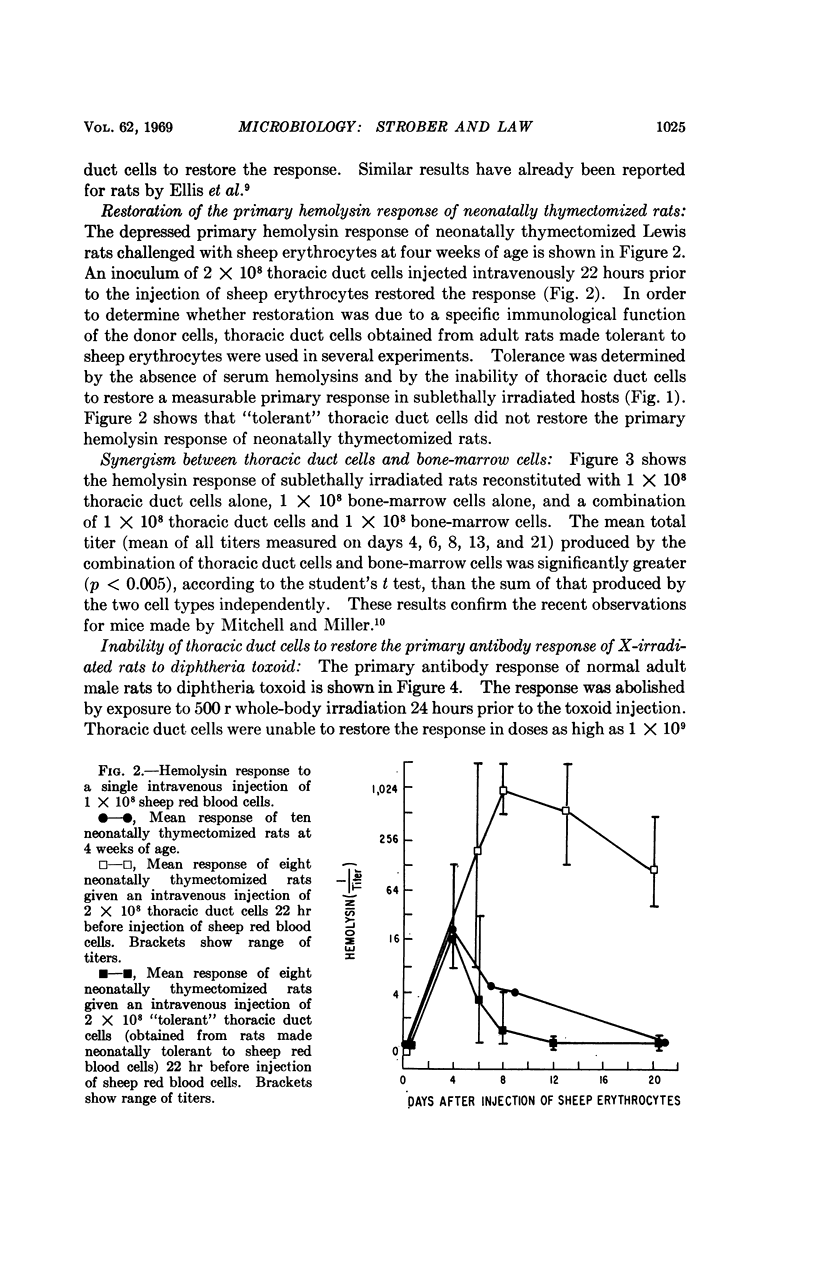
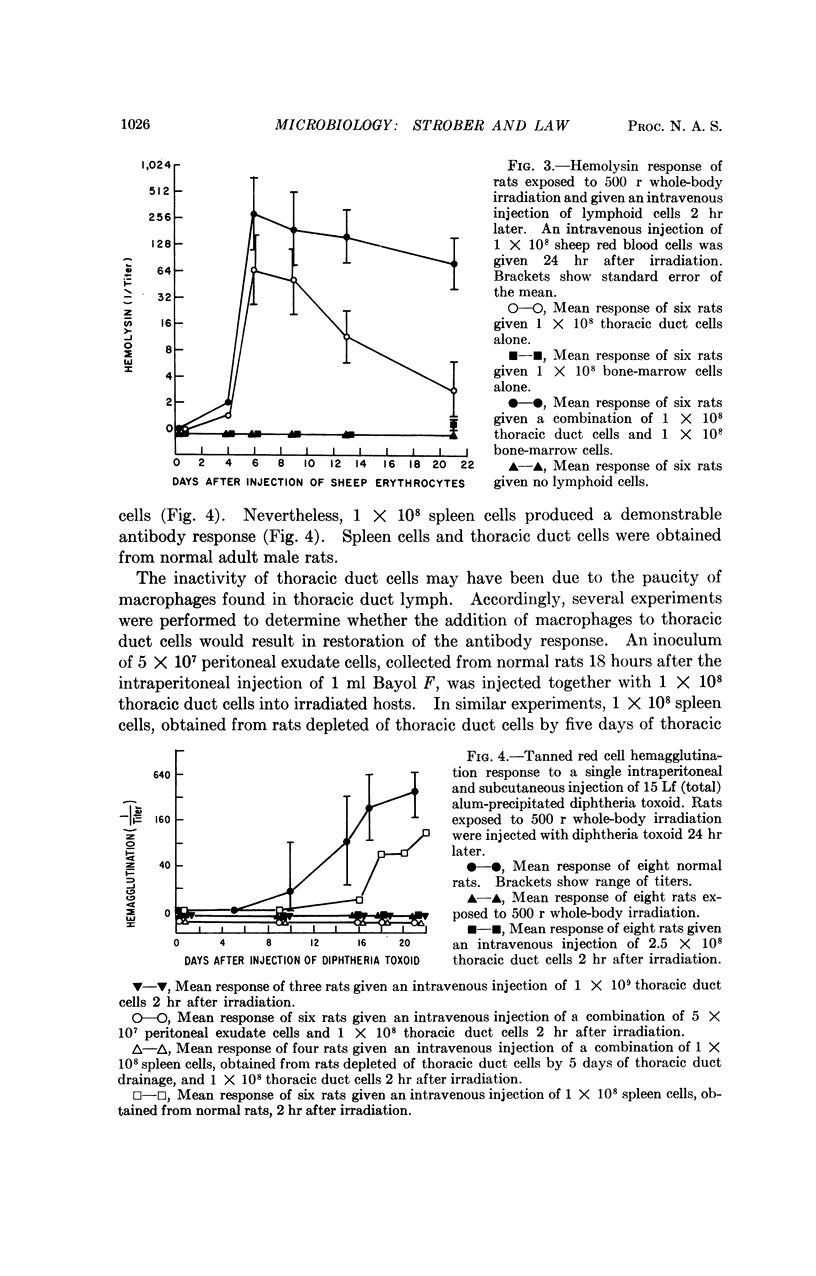
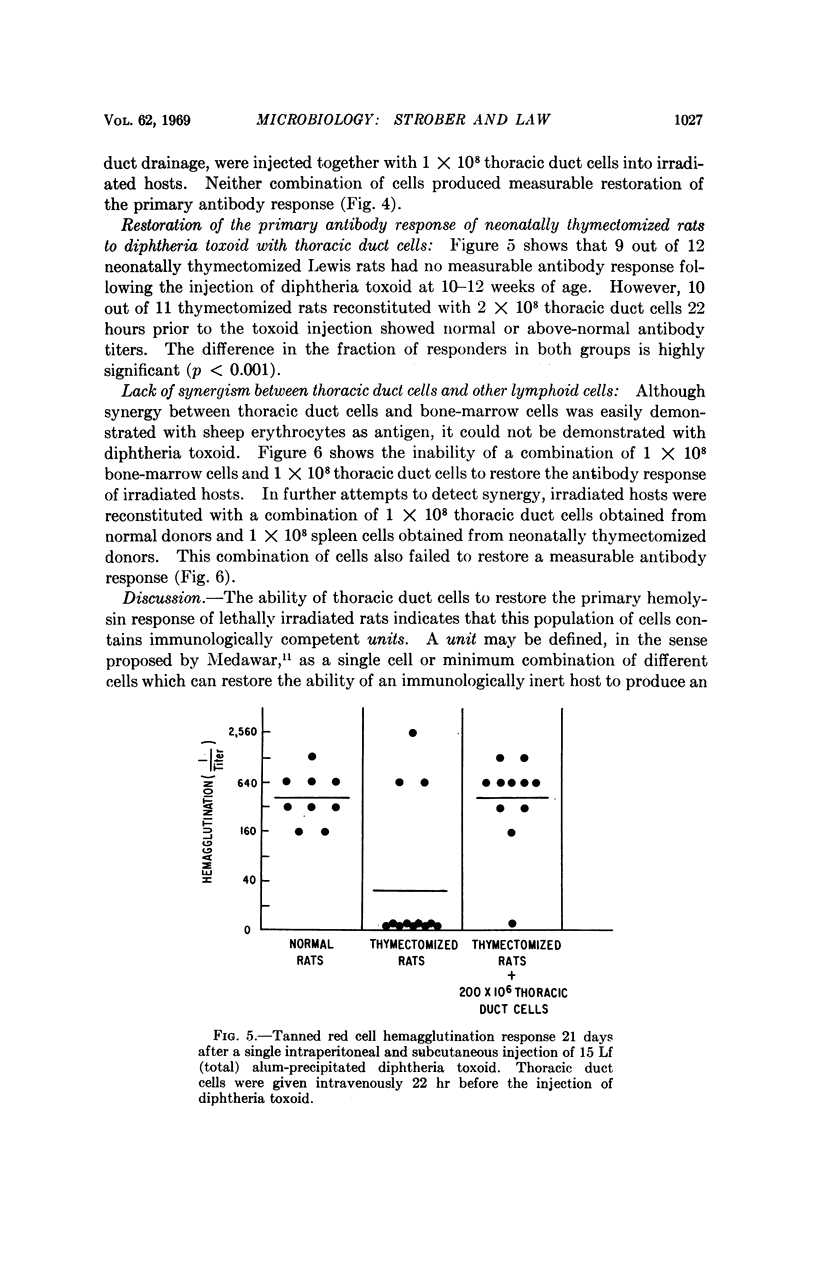


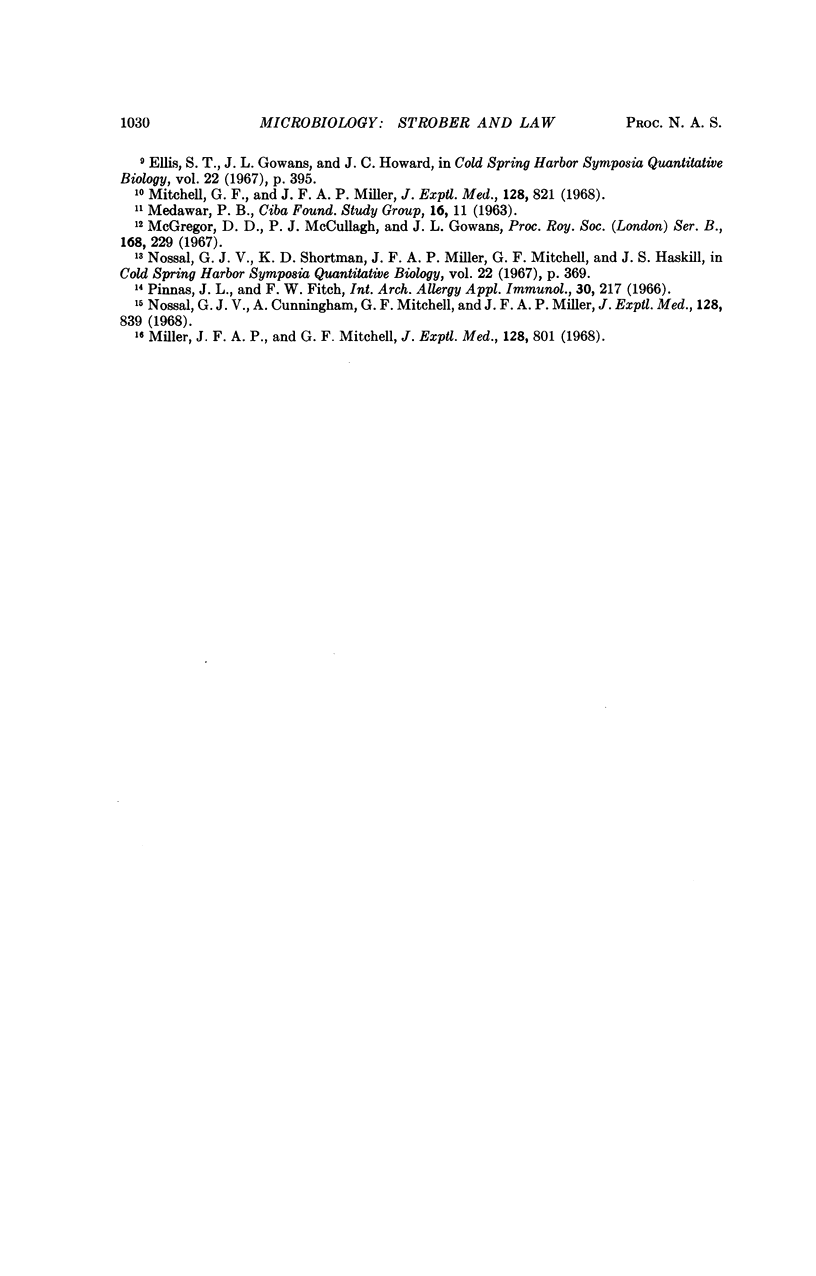
Selected References
These references are in PubMed. This may not be the complete list of references from this article.
- MILLER J. F. Studies on mouse leukaemia. The role of the thymus in leukaemogenesis by cell-free leukaemic filtrates. Br J Cancer. 1960 Mar;14:93–98. doi: 10.1038/bjc.1960.11. [DOI] [PMC free article] [PubMed] [Google Scholar]
- McGregor D. D., McCullagh P. J., Gowans J. L. The role of lymphocytes in antibody formation. I. Restoration of the haemolysin response in x-irradiated rats with lymphocytes from normal and immunologically tolerant donors. Proc R Soc Lond B Biol Sci. 1967 Sep 12;168(1012):229–243. doi: 10.1098/rspb.1967.0063. [DOI] [PubMed] [Google Scholar]
- Miller J. F., Mitchell G. F. Cell to cell interaction in the immune response. I. Hemolysin-forming cells in neonatally thymectomized mice reconstituted with thymus or thoracic duct lymphocytes. J Exp Med. 1968 Oct 1;128(4):801–820. doi: 10.1084/jem.128.4.801. [DOI] [PMC free article] [PubMed] [Google Scholar]
- Mitchell G. F., Miller J. F. Cell to cell interaction in the immune response. II. The source of hemolysin-forming cells in irradiated mice given bone marrow and thymus or thoracic duct lymphocytes. J Exp Med. 1968 Oct 1;128(4):821–837. doi: 10.1084/jem.128.4.821. [DOI] [PMC free article] [PubMed] [Google Scholar]
- Nossal G. J., Cunningham A., Mitchell G. F., Miller J. F. Cell to cell interaction in the immune response. 3. Chromosomal marker analysis of single antibody-forming cells in reconstituted, irradiated, or thymectomized mice. J Exp Med. 1968 Oct 1;128(4):839–853. doi: 10.1084/jem.128.4.839. [DOI] [PMC free article] [PubMed] [Google Scholar]
- Pinnas J. L., Fitch F. W. Immunologic competence of thymectomized rats to several soluble and particulate antigens. Int Arch Allergy Appl Immunol. 1966;30(3):217–230. doi: 10.1159/000229807. [DOI] [PubMed] [Google Scholar]
- STAVITSKY A. B. Micromethods for the study of proteins and antibodies. I. Procedure and general applications of hemagglutination and hemagglutination-inhibition reactions with tannic acid and protein-treated red blood cells. J Immunol. 1954 May;72(5):360–367. [PubMed] [Google Scholar]
- Strober S. Initiation of primary antibody responses by both circulating and non-circulating lymphocytes. Nature. 1968 Aug 10;219(5154):649–651. doi: 10.1038/219649a0. [DOI] [PubMed] [Google Scholar]
- Strober S., Mandel M. A. Differences in the distribution of antigen reactive cells in the lymphoid tissues of the rat and mouse. Proc Soc Exp Biol Med. 1969 Jan;130(1):336–338. doi: 10.3181/00379727-130-33550. [DOI] [PubMed] [Google Scholar]


